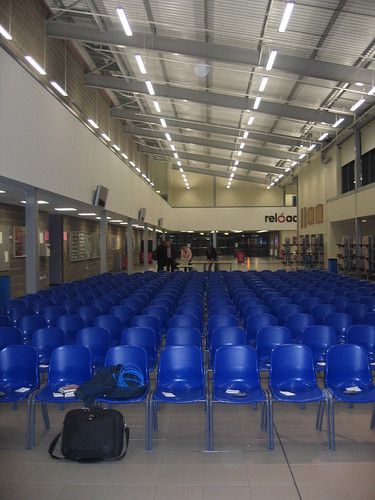Within our team teaching programme we're looking at how we can create as many opportunities for students to learn at their own pace and with the right learning goals. This, in itself, is quite a huge ask when you're talking about 58 students and counting.
One of our favourite tools for learners to know where their understanding is, and what to work on next, is the Solo Taxonomy model. The Solo levels are, and framed for a math's learning goal, in a nut-shell;
Pre Structural - I'm just starting out.
Uni Structural - I know one thing about the goal.
Multi Structural - I know three or more things about the goal but I'm not sure when or why to use them and I sometimes make mistakes.
Relational - I know three or more things about the goal and I know when and. Why to use them.
Extended Abstracted - I can teach others how to do this and I can use this goal to apply to other goals.
This year we've started using the Solo Taxonomy (See Pam Hook's site for more info) to create differentiated stations within our math's workshops. Here's how we put the levels to use;
When we first run a workshop we work with materials and take the whole group through the learning intention and use buddies to share our ideas and work through a few problems. At the end of session we share our understanding of where our learning is at. We talk about what each Solo Level would look like and then share our understanding using hand signals. You can see some examples of the symbols here.
The next time we run the workshop we meet as a large group and quickly remind ourselves of the goal and how it works with a couple of examples. Then we show the symbols our learning is at the moment (we're trying not to say, 'I am....' because it's not US that are multi structural but our learning). This is usually quite varied with students at all stages of understanding.
Then we talk about the different stations around the room. We make sure that everyone knows where they are, what they will be doing at each station and how the will know when they can progress to the next station.
At each station we have card signs for each Solo Level that are shown in the pictures. Here's how each station works.
 1. At the Pre-Structural / Uni-structural station the students work mostly with the teacher and are scaffolded through examples with materials and lots of prompting and questioning. The focus here is helping them see some concrete solutions and touching, moving and talking with their thinking buddy.
1. At the Pre-Structural / Uni-structural station the students work mostly with the teacher and are scaffolded through examples with materials and lots of prompting and questioning. The focus here is helping them see some concrete solutions and touching, moving and talking with their thinking buddy. 2. The Multi-structural station has a set of written equations with at least example of how to set out the thinking involved with solving the problem. Students work with a little prompting from the teacher checking in on them occasionally and their learning is written into their books for easy reference for them and the teacher.
2. The Multi-structural station has a set of written equations with at least example of how to set out the thinking involved with solving the problem. Students work with a little prompting from the teacher checking in on them occasionally and their learning is written into their books for easy reference for them and the teacher. 3. Lastly, the Relational and Extended Abstract station is where the students can have a chance to confirm that they have a solid grasp of the goal and to check and little holes they have in their understanding. We give them a word problem with the maths within it and they have to read the problem, write down the maths equation or solution to the problem and then create an 'artifact' of the learning that will help others learn. So far these have been posters, instructional videos like Showme or Doodle Cast Pro.
3. Lastly, the Relational and Extended Abstract station is where the students can have a chance to confirm that they have a solid grasp of the goal and to check and little holes they have in their understanding. We give them a word problem with the maths within it and they have to read the problem, write down the maths equation or solution to the problem and then create an 'artifact' of the learning that will help others learn. So far these have been posters, instructional videos like Showme or Doodle Cast Pro.
There are three things that impress me during these workshops;
- The students are (mostly) incredible honest about their understanding. It's very obvious when someone is at the wrong place and their peers are very quick to help them out when they are, either with redirection or peer tutoring. For the odd one or two who constantly over estimate their understanding it's very easy to quickly check in with them once the stations start.
- This approach allows them to move stations when they think they are ready and is always done with some guiding from the teacher. Once they think they are ready to move they check with the teacher and we talk about why they think they are ready. It's wonderfully fluid with some learners moving very quickly and others taking 2 or more workshops to consolidate and really gain some depth to their learning. I have seen learners move from Pre Structural to Extended Abstract in one workshop and it gives them a real tangible way to view their progress.
- These Solo Stations make the learning visible! We can all see where our thinking is working at, where we are moving to next (literally and figuratively) and as a teacher I have a quick snapshot of where this group is currently at.
I should also mention that we run learning programmes where students are guided to make their own choices about the goals and workshops they attend. In a workshop we could have students who have been working on a goal for 2 weeks and others who arrived for the first time. The Solo Stations approach allow us to make the learning M and M - 'meaningful and manageable.'
Our next step is to move this approach and adapt the pedagogy to other learning areas. There are advantages for workshops to remain as a large group and I'm thinking that we could set up the stations later at the end of a reading or writing workshop.
Are you catering for different learning levels and learning paces in your programme? We'd love to hear how you're doing that.














































.JPG)


